Ecological Society of America Awards UT Researchers
Ecological Society of America Awards UT Researchers

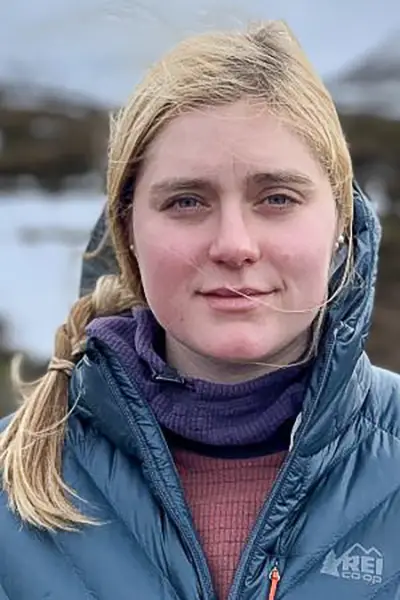
by Randall Brown
Two Vol researchers from the UT Department of Ecology and Evolutionary Biology (EEB) earned honors in the 2024 Ecological Society of America (ESA) Awards. These awards recognize outstanding contributions to ecology in new discoveries, teaching, sustainability, diversity, and lifelong commitment to the profession.
EEB Professor Michael Blum, associate dean for research and creative activity in the College of Arts and Sciences, shared in the ESA’s George Mercer Award, given annually for an outstanding ecological research paper published within the past two years with an early-career lead author.
EEB PhD student Alivia Nytko earned the E. Lucy Braun Award for Excellence in Ecology for her poster presentation at the 2023 ESA Annual Meeting titled, “Plant rarity related to phylogenetic divergence in biomass: Implications for ecosystem function.”
“We are so pleased that our EEB researchers have been recognized by ESA for their scientific achievements,” said College of Arts and Sciences Interim Executive Dean Robert Hinde.
Blum collaborated with lead author Megan Vahsen, a postdoctoral fellow at Utah State University, Associate Professor Scott Emrich from UT’s Tickle College of Engineering, and others on the study “Rapid plant trait evolution can alter coastal wetland resilience to sea level rise,” published in Science in January 2023. Their work calls attention to the significant role of rapid evolution in shaping how ecosystems respond to global change.
They examined a dominant coastal marsh sedge to reveal how genetically based variation in a plant’s traits can evolve rapidly and influence a marsh’s resilience to sea level rise. The team used a unique approach, growing “resurrected” plants from decades-old seeds recovered from marsh soils and employing an ecosystem modeling approach. Bridging quantitative genetics and ecosystem modeling, their study highlights the need to consider evolutionary processes in ecological forecasting.
Nytko’s winning research challenges conventional views on plant rarity by suggesting that rarity might often be an evolutionary adaptation rather than a result of environmental constraints. She used data from 25 Eucalyptus species to examine how natural selection influences plant traits that in turn shape plants’ range sizes and habitat needs. Her findings reveal that rare species are consistently smaller than their more common counterparts and that this trait has evolved multiple times across different groups. Her work highlights potential pathways for promoting conservation of rare plant populations.
“This excellence in ecology award from ESA for Alivia is fitting and well-deserved,” said Professor and EEB Department Head Jennifer Schweitzer. “Alivia is such a creative graduate student and this rarity work with Professor Bailey is innovative and has the potential to change how we think about, predict and manage rare species in nature.”
Nytko’s award is named for E. Lucy Braun, an eminent plant ecologist and one of the charter members of the ESA, studied and mapped North American forests and described them in her book, The Deciduous Forests of Eastern North America.
“It is such an achievement that two researchers in the EEB department have been honored for their work in ecology on the national stage,” said Professor Kate Jones, divisional dean for math and natural sciences. “Alivia Nytko winning the Braun Award for Excellence in Ecology and being singled out for her poster presentation at the Ecological Society of America’s annual meeting is a huge honor. It is also fantastic to see my colleague Mike Blum’s work with Megan Vahsen being recognized in this way.”
ESA will present the 2024 awards during a ceremony at the society’s upcoming annual meeting, August 4–9 in Long Beach, California.
Suissa Study Has High Hopes For Plant-Ant Partnerships
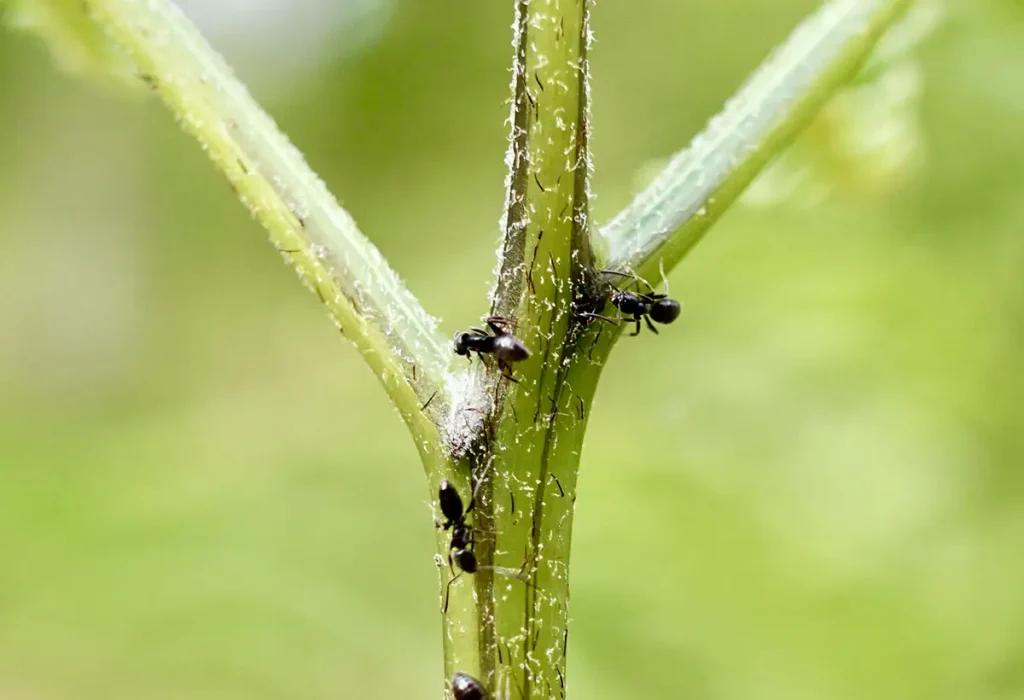
by Randall Brown
Collaborations across research disciplines can lead to unexpected breakthroughs and discoveries. Collaborations across species lead to unexpected evolutionary paths of mutual benefit.
For example, some plants have managed to recruit ant bodyguards. They produce sugary nectar on their leaves that attracts the ants, then these very territorial and aggressive ant mercenaries patrol “their” plant and sting or bite herbivores that try to eat it.
These relationships are well-documented in flowering plants, but they also occur in non-flowering ferns. This is weird news for researchers, as it has long been thought that ferns lack the nectaries for such complex biotic interactions.
Jacob Suissa, assistant professor in the UT Department of Ecology and Evolutionary Biology, worked with colleagues at Cornell University, including fern expert Fay-Wei li and ant expert Corrie Moreau, to investigate how this phenomenon developed over the millennia. They recently published findings in Nature Communications about the evolutionary timeline and underlying factors of this interspecies partnership.
“The new elements of this work are twofold,” explained Suissa. “First, we discovered that nectaries—the structures that produce sugary nectar to attract ant bodyguards—evolved in ferns and flowering plants around the same time.”
This happened some 135 million years ago, coinciding with the rise of plant-ant associations in the Cretaceous period.
“This timing is quite spectacular given that it is very late in fern evolutionary history, nearly 200 million years after their origin,” said Suissa. “But it’s very early in flowering plant evolutionary history, nearly at the start of their origin in the Cretaceous.”
The second new element is how it all happened. Ferns originally flourished as terrestrial plants, growing on the forest floor. They transitioned in a major way in the Cenozoic Era, around 60 million years ago, becoming epiphytic, or tree dwelling, plants.
They learned some new habits on their way up.
“We discovered that as ferns left the forest floor and moved into the canopies, either as epiphytes, climbers, or tree ferns, they tapped into the existing ant-flowering plant interactions and evolved nectaries,” said Suissa.
This presents a curious dynamic in the ecological and evolutionary history of these two plant lineages. Ferns and flowering plants diverged from a common ancestor more than 400 million years ago, but then hit their stride in parallel with their nectary evolution and the mutually beneficial ant-plant tradeoff.
“This suggests that there may be some ‘rules of life’ governing the evolution of non-floral nectaries and ant-plant mutualism,” said Suissa. “This work can help future investigations by providing the evolutionary framework or backdrop for ecological, developmental, or genomic analyses.”
Read Suissa’s full paper, “Convergent evolution of nectaries in ferns facilitated the independent recruitment of ant-bodyguard from flowering plants,” in Nature Communications.
UT Researchers Dig Up Good News For Microbial Studies
UT Researchers Dig Up Good News For Microbial Studies
by Randall Brown
Post-doctoral researcher Joe Edwards and graduate student Sarah Love, both in the Department of Ecology and Evolutionary Biology, published findings this spring that can save fellow researchers a lot of time and energy when storing soil samples for later study of their microbial content.
The preferred method for storing soil samples for the study of microbes has long been to freeze them to keep the DNA intact for studies that might need to extract information years down the road. The downside is the need to power these freezers and maintain facilities to house them.

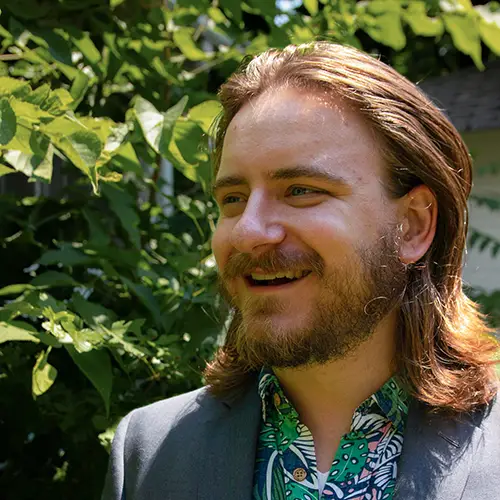
Edwards and Love examined a wide array of soil samples in a project funded by the National Science Foundation and the US Forest Service. Their analysis indicates that soil stored under refrigerated or air-dried conditions can still retain the needed information for understanding microbial community composition and structure for many years.
“We wanted to show that these air-dried soils were still useful for understanding soil microbial communities,” said Edwards. “We’re using dried soil microbes from an archived national database to look at long-term, continent-wide spatial patterns in fungal communities and compare those with forest census data from all of those same plots.”
This soil database stores a history of the ecological changes in an area over long periods of time. Researchers want to study these soils with relatively new methods to build a timeline of ecological changes in fungi at the microbial level.
“This microbial sequencing technology has only been around for maybe the last 10 to 15 years or so,” said Edwards. “We don’t have very long-term trajectories for these microbiomes. The cool thing about these archives is that they were sampled more than once, so we have multiple resampling. We can look at how much of that community changes over time and get historical patterns for them, which is something really nobody has done yet.”
The results that Edwards and Love found show that dry-storage soil samples can be extremely useful for studying how soil properties and fungal communities change over longer periods, potentially up to decades.
“What we were saying in the paper is a little nuanced,” said Edwards. “We managed to maintain the environmental variance that was explained in the microbial community. The method isn’t quite as reliable if you’re just trying to track specific taxa of fungi across time. But for looking at broad patterns in community diversity and community composition, it’s useful. We can get a good idea of the overall shape of these communities as they change over space and time.”
Knowing the reliability of available archived information can help future researchers know that their samples will give them the accurate data they need.
Edwards and Love will apply the findings themselves to the next phase of their own soil research: sequencing thousands of air-dried soils from across the country. The information they find can offer important new understanding of long-term, global patterns of change.
Departmental Support Boosts NSF Awards For Graduate Students
Departmental Support Boosts NSF Awards For Graduate Students
by Randall Brown
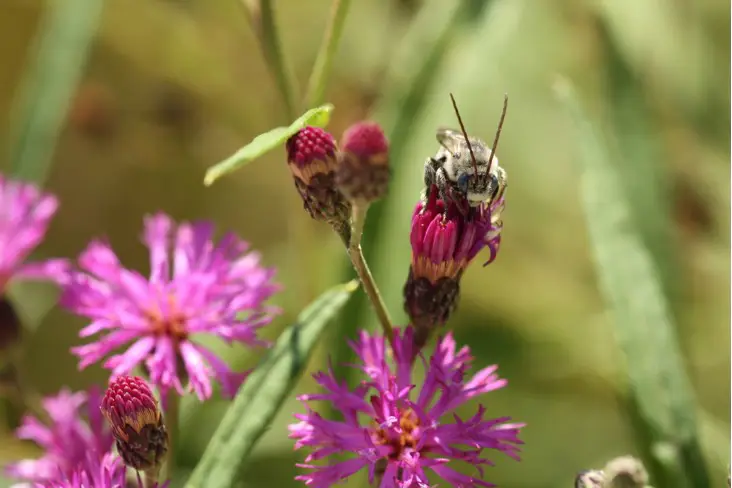
An increasing number of Vols in the Department of Ecology and Evolutionary Biology (EEB) earned awards through the National Science Foundation (NSF) Graduate Research Fellowship Program (GRFP). It marks a successful effort from the department to support researchers at the graduate level.
EEB winners are Sam Wilhelm, Kate Loveday, and Keelee Pullum. Other 2024 fellowship winners across the UT College of Arts and Sciences include Gage Coon from the Department of Microbiology and Charles Bell from the Department of Physics and Astronomy.
“These are some of the most distinguished fellowships that a grad student can get,” said Stephanie Kivlin, associate professor and director of graduate studies in EEB. “It shows that our students are performing at a high level, really going above and beyond.”
The GRFP helps ensure the quality, vitality, and diversity of the US scientific and engineering workforce by supporting outstanding graduate students who are pursuing full-time, research-based graduate degrees in science, technology, engineering, and mathematics (STEM) or in STEM education.
The three new awardees this year make a total of six EEB students with GRFP fellowships, representing about 10% of the department’s current graduate students. Kivlin is excited that their student-support initiatives have garnered this high number of fellowships.
“It’s nice to see the professional development training that we’re doing in the department is really paying off for our students,” she said. “We started a mock panel to review proposals before they are submitted in 2019. Since then, we’ve had so many more proposals funded. We also have writing and presentation classes, so our students are trained in multiple skills for the workforce.”
The GRFP provides three years of support over a five-year fellowship period for the graduate education of students who have demonstrated their potential for significant research achievements.
“If you have your own funding as a graduate student, you can pursue whatever question you want,” said Kivlin. “Often those are independent of the principal investigators of the graduate labs. It springboards students’ careers then because everyone can see that they have already started doing independent research.”
Wilhelm’s winning proposal looked at how flowering plant communities in the southeast respond and rebound to annual wildfires, and how that in turn might mediate the associated bee community in the area.
“I used metacommunity theory to hypothesize that different fire regimes may support a mosaic of different plant-bee ‘interaction metacommunities’ at the landscape scale,” said Wilhelm. “I proposed to test this by comparing plant-bee interaction dynamics across multiple annual fire treatments that differ in seasonality. I am thrilled to receive this award that will allow me to continue studying native bees and conservation of the ecosystems that sustain them.”
Loveday’s proposal looked into the mechanisms that allow invasive plant species to outcompete native herbaceous understories of forests.
“The GRFP is great because the NSF funds the potential of the applicant to do research effectively, not the specific projects you write up, which reinforces my confidence in doing research,” said Loveday. “The grant gives me the opportunity to pursue research questions I am passionate to answer.”
Pullum’s project aims to test how sickness behavior and parental care are traded off in the wild and how both parent and offspring fitness are affected.
“I plan to carry out these experiments for snow buntings, a species of arctic-breeding songbirds that migrate yearly to Utkiagvik, Alaska,” said Pullum. “The funding from the NSF GRFP will allow me to focus on research and community outreach during my graduate studies.”
EEB students Dusty Prater and Trina Chou earned honorable mentions for their proposals.
In microbiology, Gage Coon’s successful GRFP project aims to develop a microbial cycle that would turn atmospheric CO2 into calcium carbonate (rocks). Charles Bell, GRFP winner in physics, proposed novel ways to detect and investigate dark matter.
Faculty Recognized for Excellence in Teaching, Service, and Academic Outreach
Faculty Recognized for Excellence in Teaching, Service, and Academic Outreach
During the 2023 UT College of Arts and Sciences faculty convocation, EEB faculty received awards for excellence in teaching, research, and academic outreach.
Benjamin Keck, Lecturer – Excellence in Teaching Awards: Lecturer
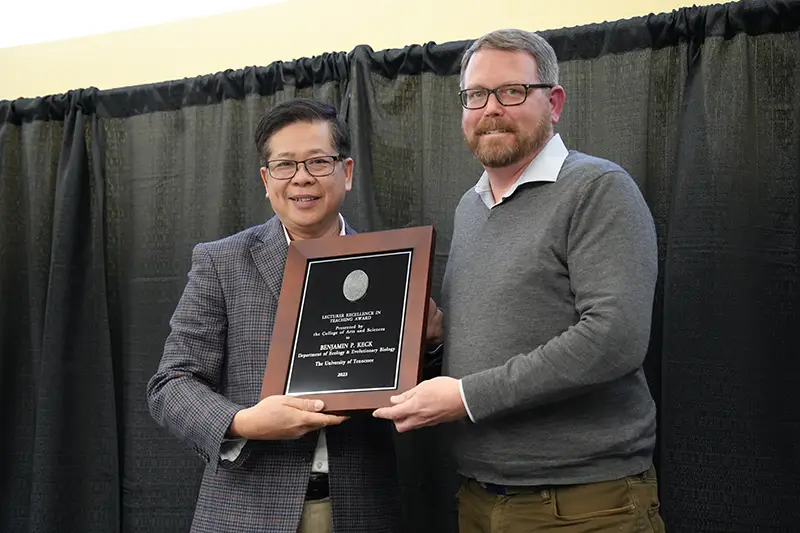
Ben Keck is an outstanding and dedicated lecturer for the University of Tennessee who has supported student learning in the classroom, in the field, and in the lab for many years. His teaching practice stands out for his high level of innovation, enthusiasm, and positive course climate.
Keck is a dedicated undergraduate teacher of both introductory biology courses and upper-level majors courses. His appointment is across two units—general biology and EEB—and he makes a huge contribution both as a teacher and a mentor to students. As the Director of the Ichthyology Collection at UT, Keck also makes outstanding contributions to community outreach efforts to highlight the diversity and importance of fishes in Eastern Tennessee.
Randy Small, Professor – Excellence in Teaching Awards: Senior

Randy Small is a full professor in EEB and has been the director for Teaching and Learning in the Division of Biology since 2019. His first rate and long-standing contributions to the educational mission of the College of Arts and Sciences makes him the perfect winner of this award. Legions of students in EEB as a department and the whole Division of Biology have benefited from Small’s dedication to student success, outstanding teaching practice, and educational vision and leadership. This award is long overdue.
Laura Alexandra Russo, Assistant Professor – Faculty Academic Outreach Award: Research & Creative Activity
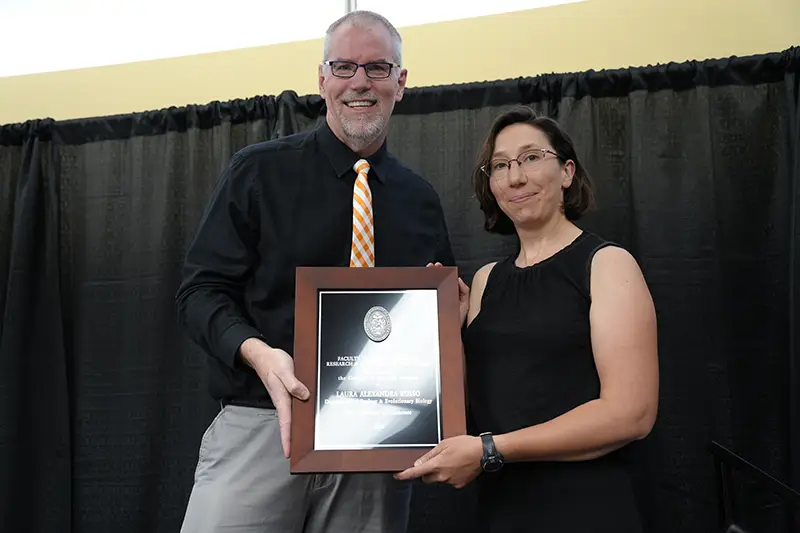
Russo is an outstanding faculty member in the Department of Ecology and Evolutionary Biology whose outreach has raised the profile of UT Knoxville scientifically and to the public. Her research engages the public, community groups, state agencies, students, and others to tackle declines in bee species and other pollinators and what can be done to reverse these trends. Her approach exemplifies engaged scholarship that is conducted with and in communities.
Russo regularly leads outreach events at state parks like Seven Islands and Roan Mountain and national parks like the Great Smoky Mountains, including pollinator and plant hikes and bioblitzes in which community members find, identify, and document biodiversity. She actively engages with UT Extension, giving seminars and running outreach events at UT’s research and education centers across the state.
Elisabeth Schussler, Professor – Outstanding Service Award
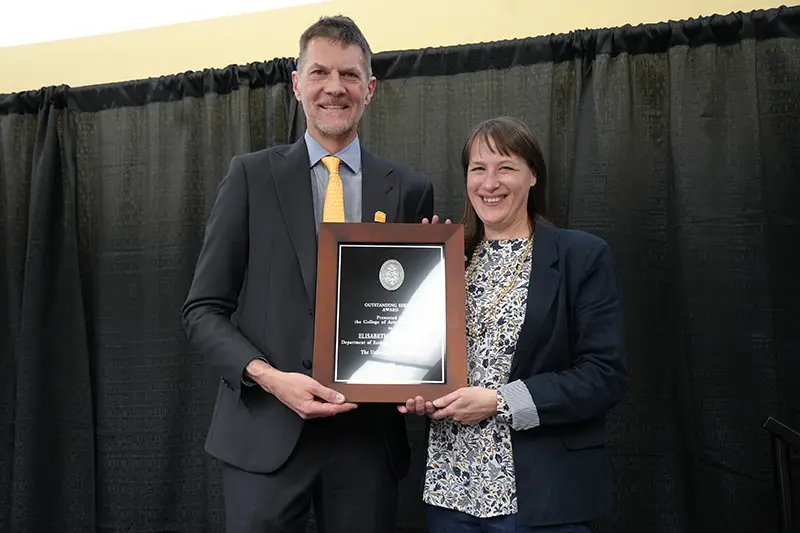
In her role as Director of Biology Teaching and Learning, Professor Schussler ensures our students in the lower-division biology courses receive excellence instruction from our graduate teaching assistants and nontenure-track faculty.
She provides professional development opportunities for instructors to be at the top of their teaching game and it is this passion for high-quality teaching across the natural sciences that led her to build teams of faculty members across the college and university who also want high-quality instruction in lower-level courses. As Faculty Senate president, she supported the ideas of liberal arts learning through cultivation of a strong shared governance process.
Kimberly Sheldon’s Research Featured on CBS
Kimberly Sheldon’s research on climate change effects on dung beetles was featured on CBS Saturday Morning, as part of a segment on insect declines in the Anthropocene.
Graduate Student Wieteke Holthuijzen Published in ‘The Conversation’
Murderous mice attack and kill nesting albatrosses on Midway Atoll − scientists struggle to stop this gruesome new behavior
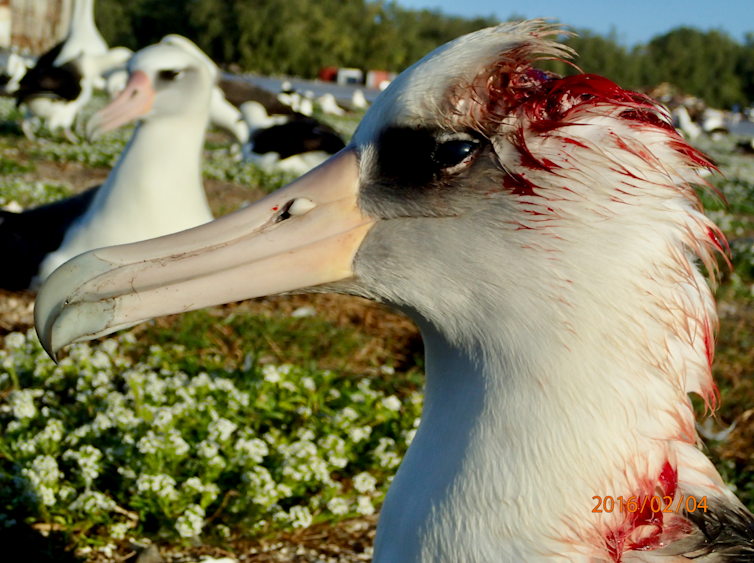
At the far end of the Northwestern Hawaiian Islands lies Kuaihelani – also known as Midway Atoll – a small set of islands home to the world’s largest albatross colony. Over a million albatrosses return to Kuaihelani each year to breed. These seemingly pristine islands appear safe, but there’s a predator lurking among the seabirds.
House mice (Mus musculus) — the same kind that may be in your residence — have started to attack and kill albatrosses, eating them alive as they sit on their nests. I’m an ecologist who’s been studying the mystery behind these murderous mice.
A predator hiding in plain sight
Once the site of intense warfare during World War II, Kuaihelani is now a national wildlife refuge.
Without predators such as cats, rats or mongooses, Kuaihelani provides a safe haven for millions of nesting and migratory birds, including mōlī (Phoebastria immutabilis), also known as Laysan albatrosses. These seabirds, each about the size of a goose, nest in nearly the exact same spot each year, producing only one egg annually.
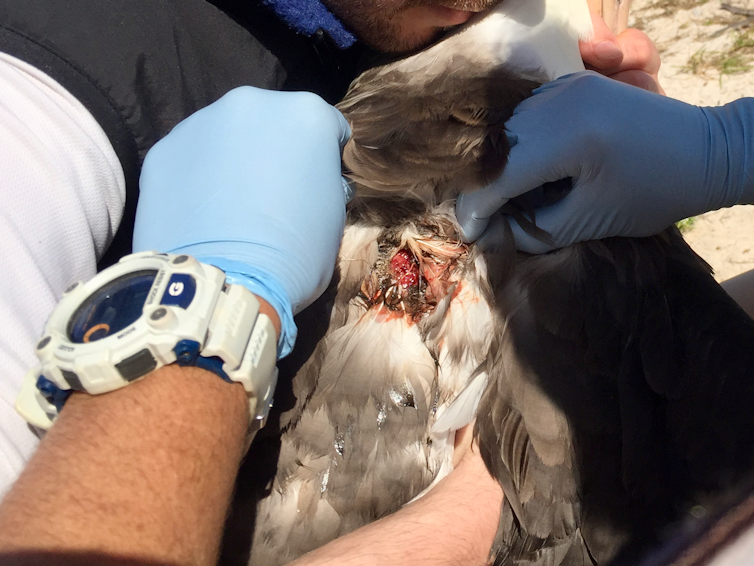
In the winter nesting season of 2015, bird-counting volunteers and biologists began seeing gruesome bloody wounds on nesting mōlī. At first, they found only a few mōlī with these mysterious injuries, which included severe chewing along the neck and even scalping. In the weeks that followed, they found dozens of injured mōlī, then hundreds.
Biologists were stumped. Had a black rat escaped off a docked boat? Had a peregrine falcon blown in with the latest winter storm? Desperate to identify the culprit, biologists set up game cameras around nesting mōlī.
The cameras captured bizarre nighttime footage of mice crawling and chewing on the backs and heads of mōlī. It was the first time a house mouse had ever been observed attacking a live adult, nesting albatross.
Mōlī, like many seabirds, have evolved without predators on remote islands. As a result, such seabirds are often oddly unafraid and curious – pulling on researchers’ shoelaces or nibbling at our clipboards. This phenomenon is called “island naïveté” and, however charming, can spell disaster when nonnative predators such as rats and cats are introduced to islands. Lacking innate caution, even the largest seabirds can become the defenseless prey of predators as small as a mouse.

Developing a taste for flesh
During World War II, the islands of Kuaihelani were cleared and covered with wartime infrastructure. Both black rats and house mice were inadvertently introduced at this time. Soon, the rats began decimating populations of burrowing seabirds.
When the military importance of Kuaihelani faded in the 1990s, management of the atoll was transferred to the U.S. Fish and Wildlife Service. Rats were successfully eradicated in 1996, but mice remained. Thought to be small and harmless, they didn’t generate much concern until 2015.
Although scientists may never know exactly why mice began to attack and kill mōlī, we have some ideas.
Due to climate change, Kuaihelani has experienced increasingly erratic precipitation, sometimes resulting in long dry spells or intense downpours. During dry periods, vegetation quickly dies back. It’s likely the usual food items for mice, namely seeds and bugs, decline during these periods. In order to survive, mice need to find a different food source.
On an island with millions of birds, seabird carcasses are plentiful and attract a rich community of bugs, including cockroaches, isopods and maggots. Mice appear to have quite an appetite for these critters and likely feed on seabird carcasses at the same time. The transition from scavenging dead seabirds to attacking live ones that don’t fight back is only a small step.
As mouse attacks on nesting mōlī escalated from 2015 on, it was clear something needed to be done – and fast. The solution was to get rid of the mice, which, unfortunately, is much easier said than done.
Die-hard mice
Mouse eradication is a challenging and risky conservation endeavor that requires years of research and careful planning. Ideally, rodenticide, a type of poison used to kill rodents, should be offered when mice are most hungry and likely to eat it. This requires knowing exactly what they are eating and when those food sources are scarce.
By extracting and sequencing DNA from mouse poop and analyzing stable isotopes – a technique that identifies unique chemical fingerprints of organisms – my colleagues and I could figure out what organisms mice were eating and in what quantities. We found that mice on Sand Island of Kuaihelani mainly eat bugs (about 62% of their diet), followed by plants (27%) and finally albatross (likely mōlī, about 12%). The Fish and Wildlife Service identified July as the best time for the eradication attempt, since seabird density is typically lowest then.
Because of COVID-19 disruptions, the eradication attempt was delayed until July 2023, when the nonprofit organization Island Conservation and the Fish and Wildlife Service meticulously applied rodenticide in multiple rounds. At first, it seemed to be working. But in the weeks that followed, a few mice were spotted – then more. By September 2023, the eradication was declared unsuccessful.
Some conservation practitioners believe eradication should be attempted again, but others worry about creating mice resistant to rodenticide. When generations of rodents are exposed to rodenticide repeatedly, they may start to carry genetic mutations resulting in resistance to the poison, making future eradication efforts ineffective.
Without a doubt, mice on Kuaihelani have already been exposed to rodenticide for a long time. When Kuaihelani – or Midway Atoll – was a naval base, rodenticide was likely applied in and around buildings and residences. The rat eradication in 1996 was another exposure. I’m currently researching whether the mice on Kuaihelani already have these genetic mutations.
The worries about rodenticide-resistant mice aren’t limited to Kuaihelani. Around the world, especially in Europe, there are more and more cases of rodents carrying resistance. Rodents continue to have severe and widespread ecological effects on islands worldwide.
For now, I’m focused on helping the mōlī of Kuaihelani survive. But our research may also help inform the growing challenge of resistant mice around the world.
Wieteke Holthuijzen, Ph.D. Candidate in Ecology and Evolutionary Biology, University of Tennessee
This article is republished from The Conversation under a Creative Commons license. Read the original article.